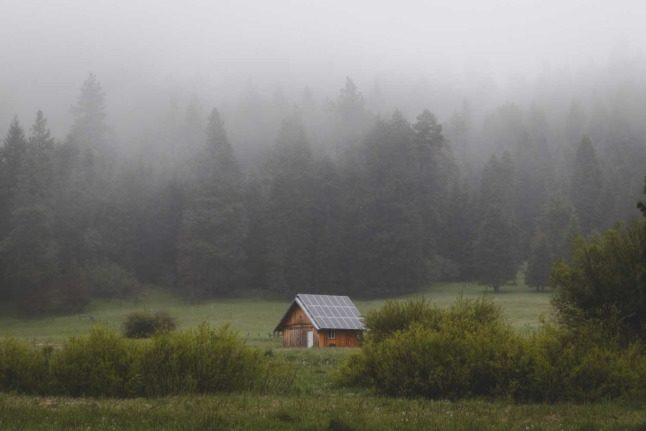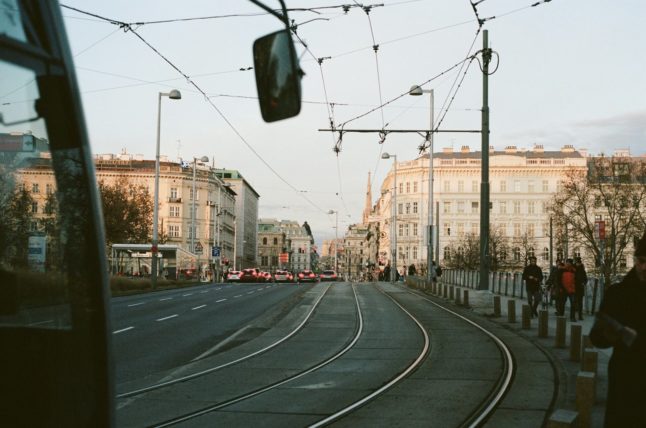As countries around the world turn to renewable energy sources to protect the climate, the Austrian Federal Government has set its sights on solar energy.
Not only is the use of solar panels environmentally friendly, but it could also save households money on rising energy bills, which makes the switch to renewable energy an attractive option for many people.
But what exactly is solar energy? And what incentives are available from the Austrian Federal Government for installing photovoltaic panels on your home?
Here’s what you need to know.
What is solar energy?
Solar energy is the conversion of sunlight into energy, primarily through the use of a photovoltaic (PV) system, which is then used to power thermal electricity, heating and cooling systems.
Globally, solar PV generation increased by 22 percent in 2019. This represented the second largest growth of an energy source behind wind power and ahead of hydropower.
The International Energy Agency (IEA) predicts that the United States, China and the European Union will add an extra capacity of 125 GW of solar energy per year between 2021 and 2025.
What is the attitude towards solar energy in Austria?
In July, the Austrian parliament voted in favour of the Renewable Expansion Law, which set a goal of switching to 100 percent renewable electricity production by 2030.
But for this to happen Austria has to invest in capacity expansion to create an additional 27 TWh of electricity generation.
According to Austria Solar, fossil fuels will be replaced by solar energy for heat production in the near future in Austria, with the potential for every second building in the country to be supplied with solar heat.
Currently, domestic solar heat production is around 100 GWh per year, but an IEA study says Austria could produce more than three times as much with investment into facilities.
FOR MEMBERS: Rising energy prices: How to save money on bills in Austria
To boost the number of solar panels, the City of Vienna last year introduced an amendment to planning laws that states all new residential buildings in the capital have to be built with photovoltaic panels. Previously, the rule only applied to industrial buildings.
In cases where it would be impractical to install solar panels on a building, contractors have to provide an alternative option for generating renewable energy instead.
In 2020, the Austrian Federal Government also announced it will equip one million homes with solar panels by 2030.
How to switch to solar power in Austria
There are a few different ways to switch to solar energy in Austria, depending on where you live.
For example, Wien Energie in Vienna runs a citizen solar power project which involves people investing in a solar power plant in return for carbon-free energy.
Investors then receive interest every year which can be used towards the electricity bill or paid out as supermarket vouchers.
The Wien Energie system is especially popular with residents that live in rented apartments in the city and don’t have the option to buy a PV system for their own home.
On a national level, a combination of state and municipal funding is available for people to install PV systems through the Climate and Energy Fund.
The fund provides one-off subsidies of between €150 and €250 per kWp for the installation of PV systems of up to 50 kW.
READ ALSO: Austria’s nationwide public transport ‘climate ticket’ now available
The investment aims to help more small and medium sized businesses, as well as individuals, switch to renewable energy.
There is also a one-time investment grant of €700 towards the installation of thermal solar systems for heating and hot water.
The application process for the subsidy starts by registering at the website and installing a PV system.
Approval of the grant will depend on the availability of the budget, which currently runs until 31 December 2022.
The Austrian Federal Government recently pledged to provide a further €20 million to the Climate and Energy Fund.
The argument for solar power generation in Austria
While recent announcements and financial incentives by the government to encourage the installation of PV systems have been widely welcomed by environmental campaigners, there are concerns it doesn’t go far enough.
Vera Immitzer, CEO for Photovoltaic Austria, told Power Technology that photovoltaic power will have to be increased by tenfold to provide the levels of electricity generation cited by the government.
READ MORE: How will climate change impact Austria?
Immitzer said larger systems could also be installed in parking lots and open spaces, as well as on residential roofs to increase overall power generation.
The concern is that renewable energy systems currently provide 1.4 terrawatt-hours (TWh) of power, which covers just 2.5 percent of the country’s energy demand.
The government plans to generate 11 TWh of electricity via solar energy by 2030.
How much energy do Austrian households use?
According to the latest figures from Statistik Austria, the most commonly used energy source in Austria is electricity at 24.3 per cent.
This is followed by fuel wood (19.3 percent), natural gas (18.6 percent) and district heating (13.5 percent).
Natural gas is also the second most popular energy source nationwide for heating after fuel wood. This means a significant rise in gas prices will have an impact on household budgets this winter.
However, switching to solar panels to generate electricity could help consumers save some money on energy bills.
READ MORE: Austrian government unveils ‘eco’ tax reform




 Please whitelist us to continue reading.
Please whitelist us to continue reading.
Member comments